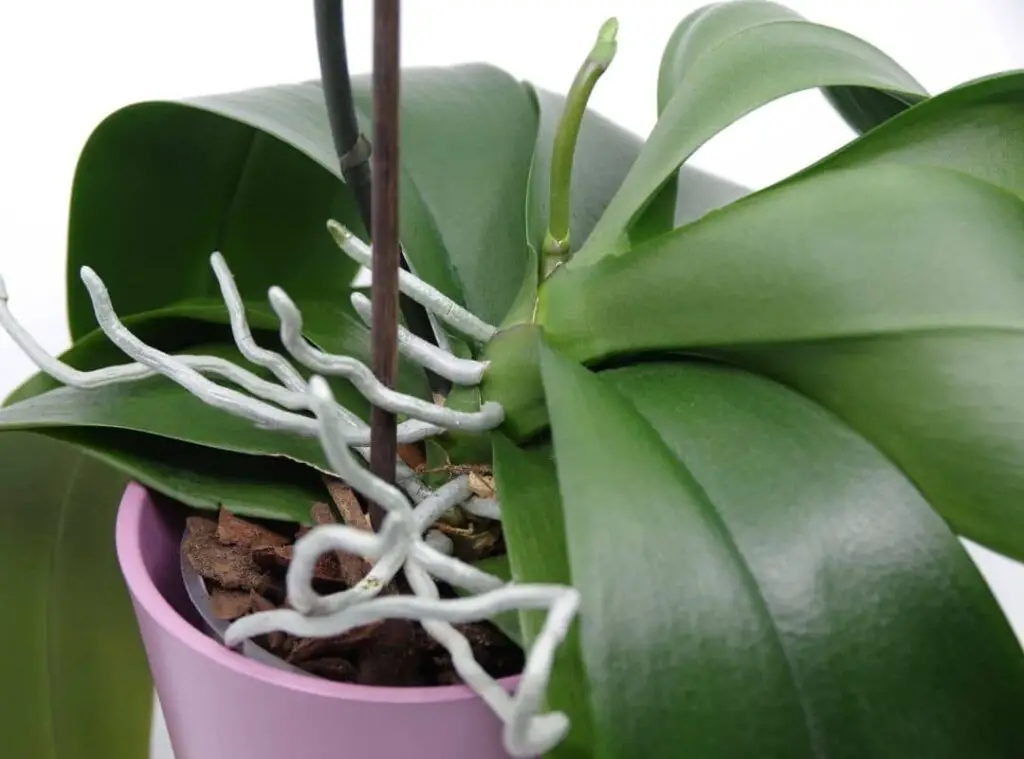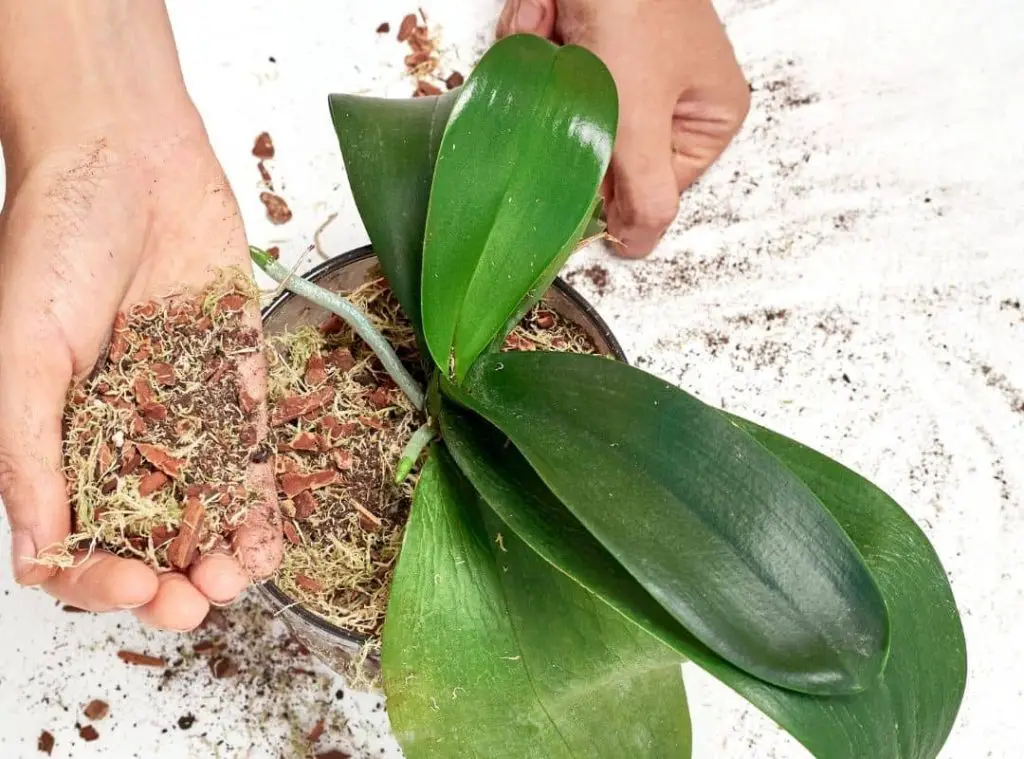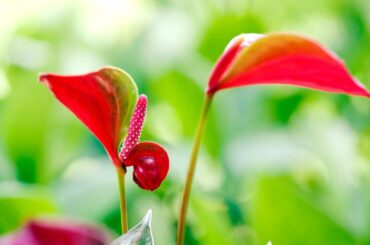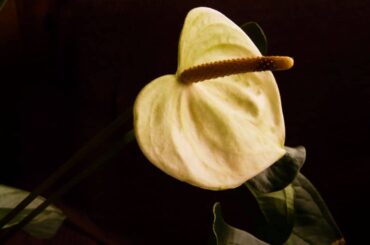If you are an orchid lover, you will find crown rot as one of the most troublesome and irritating conditions to deal with. This is a commonly spotted condition among the freshers in orchid gardening in particular. What a heartbreaking sight would it be to spot your orchid turning black and to see it is losing its usual attractive colors.

It would be further heart wrenching to see your precious orchids perish from that. So, you may be wondering what root causes it would cause and the ways of overcoming them. In that context, it would be worth going through this article as I am going to cover all the details you need to know about “How to treat orchid crown rot”.
What causes crown rot in orchids?
Crown rot is common and the culprit which could contribute to this condition would be lapses in watering. You can identify this when the rot happens in the crown of the plants. Once the rot spread severely, you could see the plant’s stem turn into black.
It will be followed by shedding the leaves of the plants and it would ultimately result in the deaths of the plants. If you identify this condition early, you can treat the plants and save them.
The Crown of the orchid is the adjoining part of the leaves and the stem of the plants. And crown rot is a kind of fungal infection. The main factor which could result in this is a soil borne fungal body which usually tends to occupy the moisture in the crown of the plants.
Crown rot could spread faster. Further it may even result in the death of the pants if you don’t treat them on time. Phalaenopsis orchid species go through this condition quite often. The structure of their plants is what makes them more susceptible for crown rot. In addition to that, Vanda orchids are another orchid species which experience this condition quite a lot.
So, we are going to have an in depth look at the orchids’ crown rot, The causes which could factor for that, preventive measures which you could take, the ways how you could identify that, and the steps which you could take to remedy them as well.
Orchid crown rot symptoms
At the beginning of crown rot, you could spot the plant’s leaves start to droop. Furthermore, they would become soft and mushy as well. In addition to that the leaves in the top parts would turn yellow in color. Having said that, orchids may change their colors due to several reasons.
So, you may not figure out as to what could be the root cause for that and whether it is crown rot or any other disease that your plants are going through. However, once the orchids go through this condition, the yellowing would start to develop from the adjoining point of the leaf to the stem.
Next, it would tend to spread outwards to the tips of the leaves. further yellowing would take place only on one side at the beginning. Once it progresses further, it would start to spread on both sides of the plants.
If you neglect treating them, the yellowing will tend to become browning which would ultimately result in the deaths of the plants.
Once the plant is dead, they would end up falling on the ground. To elaborate further on this, once the crown rot spreads on a massive scale the entire orchid stem would be black in color. In the meantime, they would shrivel and would end up perishing.
What is more concerning about crown rot is that you cannot identify this when it is in its early stage. Literally, you will be able to identify when it is spread on a significant level only.

Can an orchid recover from crown rot?
Regretfully if the crown rot is severely spread, it is very unlikely you can save the plants. That said, if you are smart enough to identify that when it is at the initial stage of the infestation, you could save the plants. To do that, there are treatments such Hydrogen peroxide which you could apply on the orchids. Hydrogen Peroxide is a quite effective solution which you could use on these plants.
Having said that, keep in mind that you could avoid root rot completely if you adhere to the right growing tips.
How to treat orchid crown rot
You may be tactful in applying ground cinnamon on the crown rotted plants at first. You can easily find the ground cinnamon powder that is available in the ground stores. Ground cinnamon is proved to be an effective natural fungicide. Many orchid enthusiasts opt to use this method to treat the crow rot quite often. Ground cinnamon is renowned for their ability in drying too.
You may simply sprinkle some ground cinnamon powder right into the orchid crown. Ground cinnamon is more like an antifungal body which would combat crown rot here. I suggest applying this, even if the plant has shed their leaves. You can apply cinnamon powder on the remaining part of the orchid’s stem.
However, when you do this, ensure that there is a proper air circulation and sufficient light exposure for the plants. Once you do this, you could start the plants like you used to do. When watering, ensure that you water the roots and the potting mediums thoroughly.
Usually you may water them just once a week. Furthermore, when you water them, ensure that you don’t let any water get in contact with the crown of the plants as well as with the orchid base.
It is vital that you keep this in mind since it is critical to keep the dryness of the plants as much as you can. If you manage to remedy the plants well ,there will be a great probability for the plants to survive. Literally after successful treatments, you could see how the leaves start to develop.
Next let the crown be alone without obstructing it so that it would end up falling on the ground. Crown rot treated orchids would tend to grow slowly. However, they would still flourish and produce new flower spikes as well.
How to Treat Orchid Crown Rot with Hydrogen Peroxide?
First and foremost, what you need to do is to isolate the plants from the other plants in your garden. When you isolate the plants, you can start treating them. However, you need to ensure that you stop the rot from spreading further. Consider that if you were lucky enough to identify root rot at the initial stage , then there will be a greater chance for you to save the plants.
In this context, using Hydrogen peroxide is an effective way of treating the crown rot of the orchids. So, to do that, you need to first purchase a 4 % Hydrogen peroxide bottle. You may easily find these in your local drug stores or even in your grocery stores as well.
Usually, Hydrogen peroxide would come up in brown colored square shaped bottles. Anybody can afford buying these as they are not costly. Furthermore, you will have to purchase only one bottle.
Once you obtain the bottle you need to pour a small amount of the Hydrogen peroxide into the base of the plant. Once you apply them, you could see some bubbles and fizzing appearing from those. You don’t have to panic here as it is quite normal. This literally means, it is working well and in the process of disinfecting the plants. Once it finishes producing the bubbles and the fizzing, you may pour excess Hydrogen peroxide from the crown.
If there is any Hydrogen peroxide remaining, you can let them air dry. Keep doing this process for about two to three days. Ideally you need to carry on with this until you don’t spot them producing the bubbles and fizzing when you reapply the Hydrogen peroxide to the crown.
If you cannot witness the bubbling and fizzing any longer you can stop doing this and start applying the cinnamon powder which would act as a natural fungicide as described in the above.

Prevention methods of orchid crown rot
It is a known fact that prevention is better than curing. So, when it comes to dealing with crown rot the best you could do is to prevent that occurring without waiting to be treated. Hence to prevent the orchid crown rot occurring you need to apply water in a precise way. Literally you should avoid over watering the plants.
Furthermore, you need to plant the orchids in a soil mix which has excellent drainage too. Literally you should never leave them to be in waterlogged conditions. Furthermore, you need to water the plants only if their soil is dry too. Do not ever spill water on the crowns of the plants as it could be harmful for them.
However, if you accidently apply water on the crowns you need to act fast and dry them and get rid of the excess water in the crown. I recommend using a paper towel or even napkin to dry the orchid’s crown if the necessity arises. Keep doing this step so that you can remove the excess water as much as you can.
Additionally, you need to water the plants in the morning. Make it a habit to do so that there will be enough time for the plants to evaporate the excess moisture and dry them.
Furthermore, do not water the orchids from overhead also. If you apply water from the top, chances are that it would result in splashing of water onto the plants and consequently it would contribute to water buildups in the plants.
There are various ways of watering the plants. However, no matter what method you practice you need to ensure that you are doing it with caution and that you don’t supply water in excess. You need to pay special attention to not to spill water on the crown of the plants as it could be one of the reasons which could factor in crown rot.
Secondly , providing a proper air circulation is one more tip which you could practice preventing the occurrence of orchid crown rot. Providing a proper air circulation is quite important to prevent both crown rot and root rot. If there are warmer conditions around, you can simply place the plants outdoors and let them gain the natural breeze.
On the other hand, if you have grown the orchids indoors, you may be tactful in placing table fans or even a ceiling fan so that it would enhance the air circulation in the growing space. Further it would help to dry up the excess moisture too. This would ultimately contribute to a healthy growing environment overall.
Apart from watering the plants properly and providing a good aeration you need to always be on alert on the plants on a constant basis so that you can avoid the crown rot in the plants. If you are on alert on the plants, you may easily identify the crown rot at the initial stage. That will allow you to apply the Hydrogen peroxide and save the plants.
If you grow the plants unattended for a longer time and neglect them in looking after them, chances are that the crown rot can spread the way it wants. Additionally, you need to observe properly whether there are any signs of crown rot before you purchase them. You need to inspect the leaves of the plants properly
Conclusion
As described in the above if you act smart you can prevent the occurrence of orchid crown rot. In fact all you need to have is a little knowledge and if you practice them properly, orchid crown rot would not be a greater concern for you.
Read Next : How Do You Get Rid Of Algae On Orchids?





